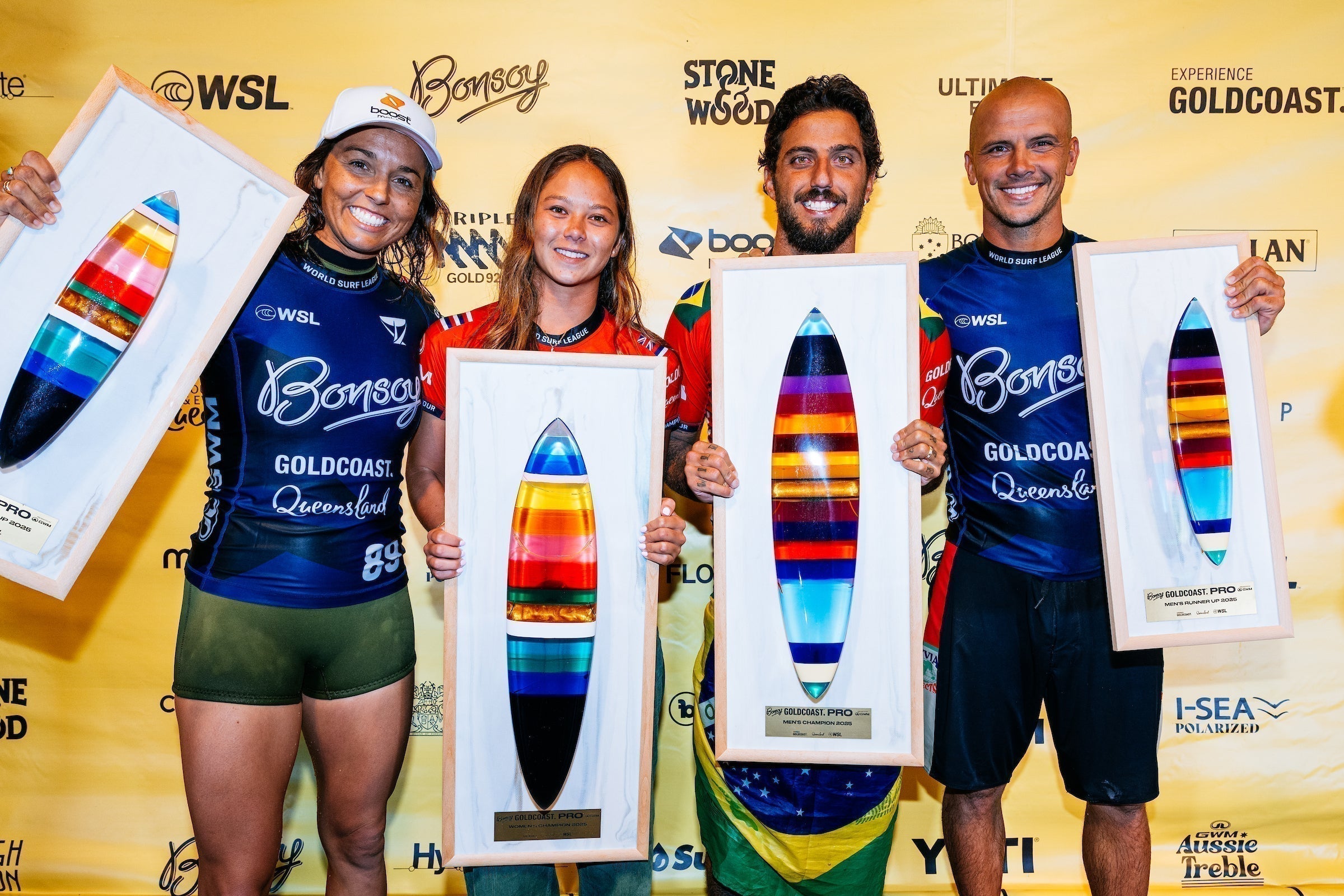Shaping The Future
A Surfline feature story.

Raised at Lennox Head, New South Wales, Thomson has point surfing in his DNA. His father, Mark Thomson, is known as a forward thinking designer who has extensively explored fin designs and all aspects of high performance surfboards with feedback from surfers like Rastovich and his extremely talented son, as well as the deep talent pool in his home region. Video clips of Thomson show him going at maximum speed and lofting a series of controlled aerial variations on a tiny craft that resembles an overblown lunch tray with noticeable acceleration, lift, and glide that puts one in mind of Laird Hamilton's hydrofoil experiments (minus the snowboard boots and jet ski).The first installment in a series of profile/interviews with a core group of ripping surfers who also design and shape their own boards, Surfline presents Daniel Thomson of Tomo Surfboards.
Departing from "normal" surfboards in most aspects. Thomson's designs nevertheless trace their lineage to the earliest advances in modern equipment from Bob Simmons in the '40s and '50s, to Greenough's extensive work on fin design, and Steve Lis' fish. A natural collaboration with Richard Kenvin in the ongoing Hydrodynamica project has resulted in the planing hull reaching its logical extreme. Tom Curren said that Daniel Thomson has "opened the door for a design push"
Daniel Thomson takes us through the details of his unorthodox, yet strangely functional, epoxy machines.


Catching up with snowboarding and skating
The key element of putting the pieces together is having a board that will do the aerials much more easily, but you can't ever give up the raw essence of surfing - the power game, the rail game, the speed and flow that's critical to good surfing. You can't give that up just to have a surf/skate style board... you see guys doing kick-flips and all kinds of goofy stuff. You want to have that drive so you project out of the lip and tackle that kind of higher, lofting, twisting air that you see in snowboarding.

Classic lines, futuristic equipment
I feel that this design direction has a lot of merit for the future of surfing - because you've got so much purity to the line you're drawing, so much speed. It's rail surfing, but you can draw your surfing right out, and at the same time you can pull really tight, blown-out maneuvres. To just stand on the board and ride, they're much easier than a standard shortboard, because with the width you don't have to pump the board to move across the wave.
[The boards] catch every bit of energy in the wave, and that's what you use to project down the line. So you have that natural element of the classic power game - the glide and style - and then when you get to the air it's a compact little Rotor Blade that you can spin and keep under your feet. An added bonus is that when you land, the smaller board doesn't jar your body as much. It has a softer landing.

Bottom contours
General design theory suggests that having a wide tail block won't help with real radical turns, so that's why you look to the bottom to get your grip. But I've also been applying micro-concaves that both provide extra lift and detachment from the water. Along the rail the concave acts like a channel and grips quite aggressively so you can push really hard through your turns. Some of my latest work features a deep single concave throughout the board, but I run an inside double concave through the centre of the board that flows into a split quad concave. The channels are set up where the rear quad fins would be, so once you engage the rail you've got a little double barrel concave that grips like a claw. There's just incredible lift and glide and grip at the same time, as well as the softer landings from floaters or aerials because you've got all these complex bottom curves that direct the water out of the way of the board and cushion the landing.
"It's been cool having a guy like Tom Curren as a test pilot, he can ride just about anything and he understands design functionality really well. He seems to be enjoying the little planing hulls I've built for him in the past couple of years - and needless to say his feedback has been invaluable."
Cutting the nose off
Going back to the planing hulls, I realized that having a parallel leading edge to the water flow immediately had a low drag sense. It's the same theory as having a low entry rocker to go faster than high entry rocker. It's a simple idea to have the leading edge of the board be dead parallel, like straight on to the water flow. That immediately gave the board, like, 30% less resistance and more speed potential, and that clean rail line to drive off your front foot and right through the nose of the board. All of a sudden it just opened up this whole new area of design potential. The fact that the nose is chopped off doesn't have an aesthetic purpose, it was like, 'OK, I have this straight parallel line and [this is] the most obvious way to connect the dots.
© Surfline / Photos: Billy Watts

Comments